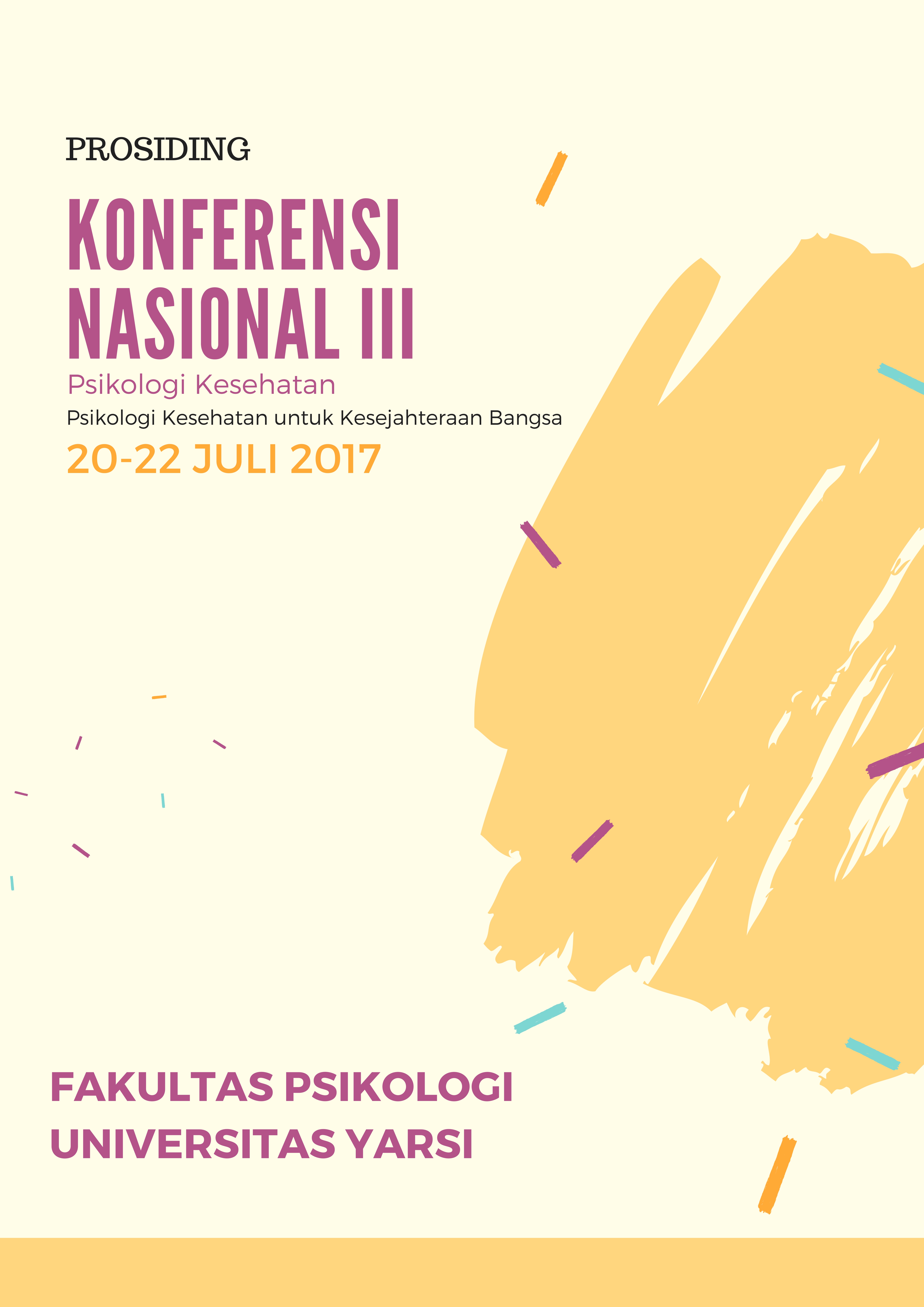PENGARUH STRES TERHADAP CRAVING PADA INDIVIDU PENYALAHGUNAAN NAPZA
Keywords:
Stres, Craving, Penyalahgunaan ZatAbstract
Stres merupakan suatu kondisi atau perasaan yang dialami individu ketika memiliki tuntutan-tuntutan melebihi sumber daya sosial dan kemampuan personal. Tingkat stres yang dialami oleh individu memiliki peran penting dalam penyalahgunaan zat dan relapse. Stres yang dialami indvidu akan meningkatkan cortisol berespon lebih cepat dan berpengaruh dengan pelepasan dopamin di ventral striatum, dopamin tersebut merupakan hal-hal yang berkaitan dengan kesenangan. Saat individu mengalami stres maka akan mengaktifkan otak bagian limbik CRF yang akan meningkatkan dopamin. Paper ini bertujuan untuk menjelaskan lebih lanjut mengenai pengaruh stres terhadap craving pada individu penyalahgunaan NAPZA berdasarkan studi literatur dari berbagai penelitian empirik.
References
Brown SA, Glassner-Edwards SV, Tate SR, McQuaid JR, Chalekian J & Granholm E. Integrated cognitive behavioral therapy versus twelve-step facilitation therapy for substance-dependent adults with depressive disorders. J-Psychoactive drug 2006 Dec;38(4):449-60.
Everitt, B. J. and Robbins, T. W. (2005). Neural systems of reinforcement
for drug addiction: from actions to habits to compulsion. Nat Neurosci,
(11):1481–9.
Goeders, N.E., Clampitt, D.M. (2002). Potential role for the HPA axis in the conditioned reinforcer-induced reinstatement of extinguished cocaine seeking in rats. Psychopharmacology 161, 222– 232.
Hassanbeigi, A., Askari, J., Hassanbeigi, D., & Pourmovahed, Z. (2013). The relationship between stress and addiction. Procedia-social and behavioural sciences 84 1333-1340.
Horvath, AT. (1988). Cognitive therapy and the addiction. International Cognitive Therapy Newsletter, 4, 6-7.
Hu, X. Et al. (2005). An expanded evaluation of the relationship of four alleles to the level of response to alcohol and the alcoholism risk. Alcoholism: clinical and experimental research. 29(1): 8-16.
Kelley, A. (2004). Memory and addiction: shared neural circuitry and molecular mechanisms. Neuron., 44(1):161–179.
Kiluk, B. D., Nich, C., Carroll, K. M. (2011). Relationship of cognitive function and the acquisition of coping skills in computer assisted
Lazarus, R. S., Folkman. (1984). Stress, appraisal, and coping. Springer: New York.
Lodge DJ, Grace AA. (2005). Acute and chronic corticotropin- releasing factor 1 receptor blockade inhibits cocaine-induced dopamine release: correlation with dopamine neuron activity. J Pharmacol Exp Ther 314:201–206.
Marlatt, G. A., & Gordon, J. R. (1985). Relapse prevention: Maintenance strategies in the treatment of addictive behaviors. NY: Guildford.
McEwen, B.S., & Stellar, E. (1993). Stress and the individual: Mechanisms leading to disease. Arch Int Med 153:2093-2101.
Mchugh, R.K., Hearon, BA., & Otto, M.W. (2010). Cognitive behavioural therapy for substance use disorder. Psychiatr Clin North Am. 2010 September ; 33(3): 511–525
Orejarena. M. J. (2010). Neuroiological mechanisms involved in MDMA – seeking behavior and relapse. (h. 13-21).
Pruessner JC, Champagne F, Meaney MJ, Dagher A. Dopamine release in response to a psychological stress in humans and its relationship to early life maternal care: a positron emission tomography study using [11C]raclopride. J Neurosci 2004;24:2825–2831.
Sarnyai, Z., Shaham, Y., Heinrichs, S.C., 2001. The role of corticotropinreleasing factor in drug addiction. Pharmacol. Rev. 53, 209– 243.
Salomon, R. L. & Corbit, J. D. (1974). An opponent-process theory of motivation. i. Temproral dynamics of affect. Psychol Rev, 81(2): 119-145.
Sinha, R. (2009). Stress and Addiction: A Dynamic Interplay of Genes, Environment, and Drug Intake, Biological Psychiatry, 66, 100 101.
Stratakis, C.A., Chrousos, G.P. (1995). Neuroendocrinology and pathophysiology of the stress system. Ann. N. Y. Acad. Sci. 771, 1– 18 treatment for substance use disorders. Drug and Alcohol Dependence, 114, 169 176.
Turnbull, A.V., Rivier, C. (1997). Corticotropin-releasing factor (CRF) andendocrine responses to stress: CRF receptors, binding protein, and related peptides. Proc. Soc. Exp. Biol. Med. 215, 1 –10.
Ungless, M. A., Argilli, E., Bonci, A. (2010). Effects of stress and aversion on dopamine neurons: Implications for addiction, Neuroscience and Biobehavioral Reviews, 35, 151 156.
Valentino, R. J., Lucki, I., Van Bockstaele, E. (2010). Corticotropin-releasing factor in the dorsal raphe nucleus: Linking stress coping and addiction, Brain Research, 1314, 29-37.
Wagner, E. F., Myers, M. G., McIninch, J. L. (1999). Stress-coping and temptation-coping as predictors of adolescent substance use, Addictive Behaviors, 24, 6, 769 779.
Wanat MJ, Hopf FW, Stuber GD, Philips PE, Bonci A. Corticotropin Releasing Factor increases mouse ventral tegmental area dopamine neuron firing through a protein kinase C-dependent enhancement of Ih, J Phhysiol 2008;586:2157-2170.
Wills, T. A., & Hirky, A. E. (1996). Coping and substance abuse: A theoretical model and review of the evidence. In M. Zeichnec & N. S. Eudler (Eds.), Handbook of coping: Theory research, and applications (pp. 279 302). New York: Wiley.
Wise, R. A. (1987). The role of reward pathways in the development of drug dependence. Pharmacol Ther, 35(1-2):227–63.
Downloads
Published
Issue
Section
License
Copyright (c) 2025 Insan Firdaus, Yekhonya Vannesa, Kemala Rahmadika

This work is licensed under a Creative Commons Attribution-NonCommercial-ShareAlike 4.0 International License.

 Insan Firdaus
Insan Firdaus
 Fakultas Psikologi – Center of Behaviour Research Universitas Kebangsaan, Indonesia
Fakultas Psikologi – Center of Behaviour Research Universitas Kebangsaan, Indonesia



